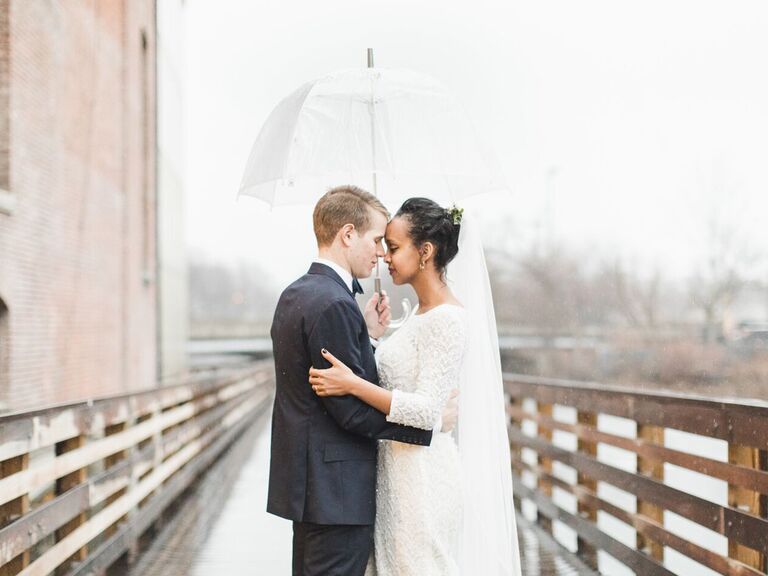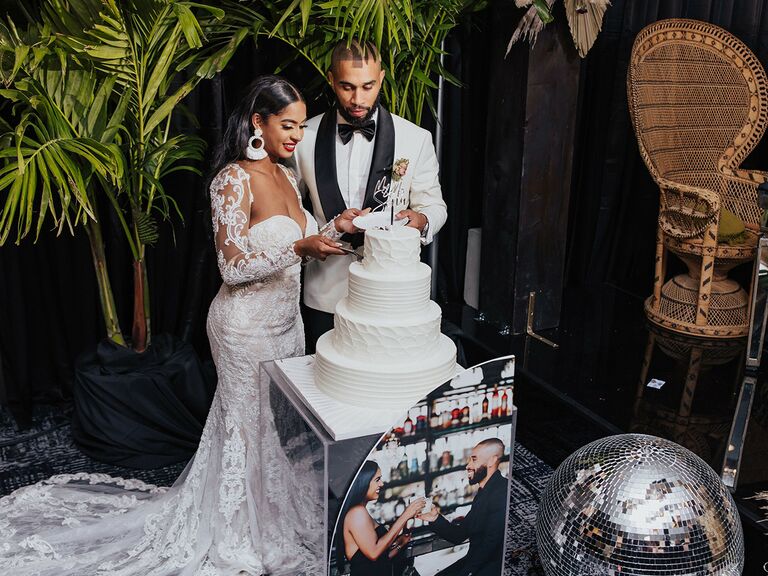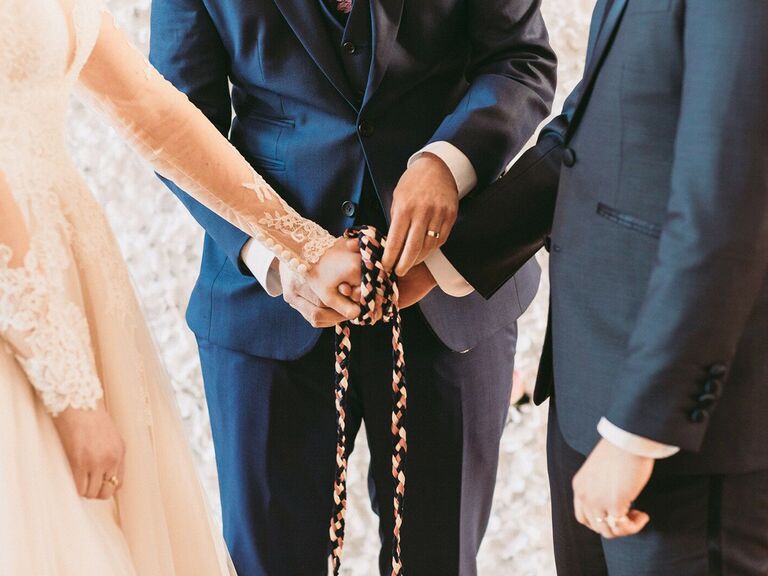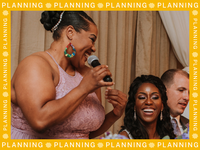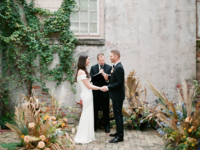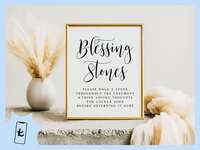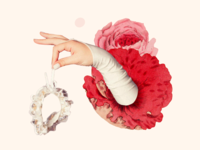52 Wedding Traditions and Superstitions You Need to Know
Weddings have occurred for centuries and many wedding traditions and superstitions have developed during this long history. Here we take a deep dive into the meaning and symbolism behind good luck and bad luck wedding superstitions, time-honored traditions and wedding folklore from different cultures and countries. You don't have to include any of these in your big day, but, if some of these traditions interest you or are meaningful to you and your family, then feel free to participate. Alternatively, you can revamp some old-fashioned traditions—your wedding should be a reflection of you and your partner after all! And, TBH, some of these wedding superstitions and traditions are pretty dated and don't apply to today's modern nuptials. So use this list of wedding traditions and superstitions for informational and inspirational purposes to ultimately celebrate your day, your way!
Wedding Superstitions and Traditions in this Article:
- Good Luck Wedding Superstitions and Traditions
- Bad Luck Wedding Superstitions and Traditions
- Engagement Ring and Wedding Ring Traditions
- Wedding Fashion Traditions and Superstitions
- Food and Family Wedding Traditions
-
Wedding Ceremony and Reception Traditions
Good Luck Wedding Superstitions and Traditions
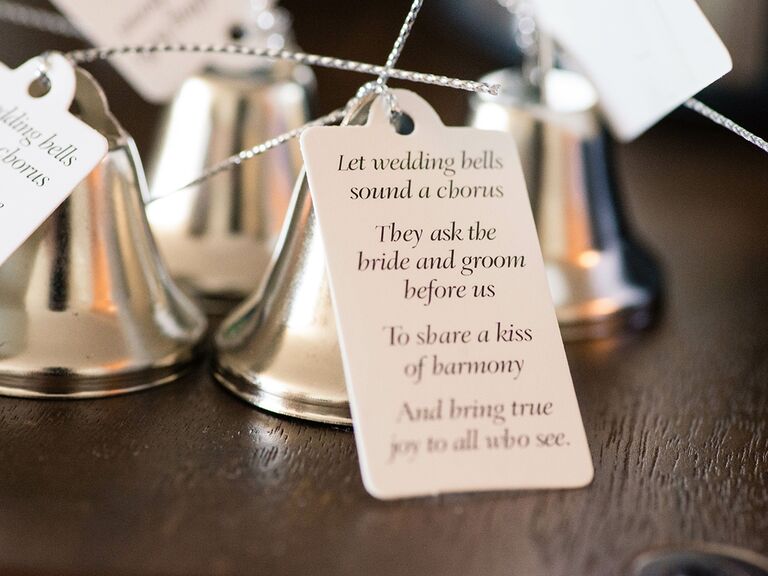
Add a little good fortune and cultural significance to your big day by incorporating one or two of these good luck wedding superstitions into your celebration.
- Hey, brides, tuck a sugar cube into your glove—according to Greek culture, the sugar will sweeten your union.
- The English believe a spider found in a wedding dress means good luck. Yikes!
- In English tradition, Wednesday is considered the "best day" to marry, although Monday is for wealth and Tuesday is for health.
- The groom carries the bride across the threshold to bravely protect her from evil spirits lurking below.
- Ancient Romans studied pig entrails to determine the luckiest time to marry.
- Rain on your special day is considered good luck, according to Hindu tradition.
- For good luck, Egyptian women pinch the bride on her wedding day. Ouch!
- Middle Eastern brides paint henna on their hands and feet to protect themselves from the evil eye. Find out about Muslim wedding rituals.
- Peas are thrown at Czech newlyweds instead of rice.
- A Swedish bride puts a silver coin from her father and a gold coin from her mother in each shoe to ensure that she'll never do without. Learn more about Swedish wedding traditions.
- A Finnish bride traditionally went door-to-door collecting gifts in a pillowcase, accompanied by an older married man who represented long marriage.
- Moroccan women take a milk bath to purify themselves before their wedding ceremony. See more Moroccan wedding customs.
- In Holland, a pine tree is planted outside the newlyweds' home as a symbol of fertility and luck.
- Bells are an important part of Irish wedding tradition, as it's said they keep evil spirts away.
- Horseshoes are thought to bring good luck, particularly at Irish weddings. Many brides wear horseshoe-shaped jewelry or include a horseshoe as part of their bridal bouquet.
Bad Luck Wedding Superstitions and Traditions
These bad luck wedding superstitions are mostly things of the past, but are interesting and provide some context nonetheless.
- Saturday is the unluckiest wedding day, according to English folklore. Funny—it's the most popular day of the week to marry!
- Years ago, it was considered bad luck for a wedding guest to purchase knives for a newly-married couple.
- Couples were not allowed to see each other before their wedding ceremony during the time of arranged marriages, so that the partners wouldn't be able to find each other unattractive and call off the wedding.
- Don't pass a nun or monk on the way to your wedding—it's considered bad luck.
- It's considered bad luck to marry near an open grave.
Engagement Ring and Wedding Ring Traditions

Your engagement and wedding rings will be part of your daily life well after the wedding day, so read on for wedding superstitions and traditions associated with this valuable symbol of marriage.
- Engagement and wedding rings are worn on the fourth finger of the left hand because it was once thought that a vein in that finger led directly to the heart.
- In the symbolic language of jewels, a sapphire in a wedding ring means marital happiness.
- A pearl engagement ring is said to be bad luck because its shape echoes that of a tear.
- Snake rings dotted with ruby eyes were popular wedding bands in Victorian England—the coils winding into a circle symbolized eternity.
- Aquamarine represents marital harmony and is said to ensure a long, happy marriage.
- Watch out, ring bearer and best man! If the wedding rings are dropped, it's thought that evil spirts will be released.
Wedding Fashion Traditions and Superstitions
Modern wedding fashion choices are certainly steeped in history. Gain a better understanding of the meaning behind these traditions and other fashion-related wedding superstitions.
- Queen Victoria started the Western world's white wedding dress trend in 1840—before then, brides simply wore their best dress. A white wedding dress is considered a symbol of purity.
- In Asia, wearing robes with embroidered cranes symbolizes fidelity for the length of a marriage.
- Ancient Greeks and Romans thought the wedding veil protected the bride from evil spirits. Brides have worn veils ever since.
- Veils were also used during the time of arranged marriages to hide the bride's appearance until the very last minute.
- In Japan, white was always the color of choice for bridal ensembles—long before Queen Victoria popularized it in the Western world.
- In Korea, brides don bright hues of red and yellow to take their wedding vows.
- Brides carry or wear something old, something new, something borrowed and something blue on their wedding day. The "something old" symbolizes ties to the past; "something new" represents a bright future ahead; "something borrowed" is a transfer of happiness from a long-married couple to the newlyweds; "something blue" is a symbol of purity.
- Putting a sixpence in your shoe represents prosperity and good luck.
- In Denmark, brides and grooms traditionally cross-dressed to confuse evil spirits.
- In Roman tradition, brides wore a flower crown or wreath to symbolize eternity and protection.
- Mexican brides sew colorful ribbons into their dress, each with a different symbolic meaning (blue for good fortune, red for passion, etc.).
Food and Family Wedding Traditions
Food, family, frienda and celebration go hand in hand when it comes to weddings, so it's not surprising that there are many wedding superstitions related to this aspect of the traditional wedding. Here's the symbolism behind these traditions.
- In Egypt, the bride's family members traditionally do all the cooking for a week after the wedding, so the couple can relax.
- In South Africa, the parents of both bride and groom traditionally carried fire from their hearths to light a new fire in the newlyweds' hearth.
- The tradition of a wedding cake comes from ancient Rome, where revelers broke a loaf of bread over a bride's head for fertility's sake.
- The custom of tiered cakes emerged from a game where the bride and groom attempted to kiss over an ever-higher cake without knocking it over.
- Legend says single women will dream of their future husbands if they sleep with a slice of groom's cake under their pillows.
- An old wives' tale: If the younger of two sisters marries first, the older sister must dance barefoot at the wedding or risk never landing a husband.
- Bridesmaids served as decoys for the bride during Ancient Roman times to confuse evil spirts or would-be kidnappers.
- The cake cutting used to be done by the bride only, to symbolize her virginity and future fertility. Nowadays, the couple participates in the cake cutting as a duo, which represents their setting up a home together and caring for each other.
Wedding Ceremony and Reception Traditions
From Wagner's "Bridal Chorus" processional song to the bouquet toss, here's the history behind these time honored traditions for the wedding ceremony and reception..
- In many cultures around the world—including Celtic, Hindu and Egyptian weddings—the hands of a bride and groom are literally tied together to demonstrate the couple's commitment to each other and their new bond as a married couple (giving us the popular phrase "tying the knot").
- The Roman goddess Juno rules over marriage, the hearth and childbirth, hence the popularity of June weddings.
- Princess Victoria established the tradition of playing Wagner's "Bridal Chorus" during her wedding processional in 1858.
- The bride stands to the groom's left during a Christian ceremony, because in bygone days the groom needed his right hand free to fight off other suitors.
- The Catholic tradition of "posting the banns" to announce a marriage originated as a way to ensure the bride and groom were not related.
- Italian couples break a glass or vase on their wedding day—the number of pieces the glass breaks into represents the number of years they'll be married. Jewish couples also break a glass during the wedding ceremony for a variety of symbolic reasons.
- The bouquet toss comes from England, where female guests used to try to rip pieces of the bride's wedding gown and bouquet for good luck. This turned into the bouquet toss, where the bride tosses her bouquet to single female guests—the one who catches it is considered the next to marry. The garter toss comes from a similar origin—the bride wore a garter that she would toss to appease the waiting crowd, rather than have guests try to rip her clothing!
